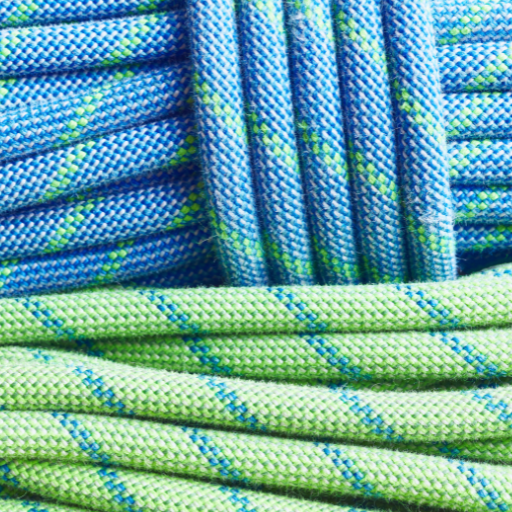Polyamides and nylons are terms that are often used interchangeably in the world of materials science and engineering; however, they represent separate classes having unique characteristics and applications. The distinctions may be indiscernible at first sight but a more intensive examination shows considerable differences which affect their different uses. This article will look deep into the basic differences between polyamides and nylons as regards to their chemical structures, mechanical properties, and common uses in various industries. Whether you are a seasoned engineer or an interested student or someone just curious about material science this all-encompassing guide will give you important insights about these two highly flexible synthetic polymers that have found extensive applications today.
What are Polyamide and Nylon?
Polyamides are a category of polymers that have amide links (-CONH-) in their structure. These adaptable materials can be made using different methods of polymerization, they include condensation of diamines with dicarboxylic acids. Nylons, on the other hand, are a group of polyamides that are particularly known for their unusual strength, resiliency as well as resistance to wear and chemicals. Textiles, motor vehicles components, industrial machinery and consumer goods rely heavily on regular nylons like Nylon 6 or Nylon 6,6. Although all nylons belong to the family of polyamides there are other types such as aramids and polyphthalamides which differ from each other in terms of molecular structure and properties.
The Basic Definitions of Polyamide and Nylon
For a comprehensive analysis of polyamides and nylons, the basic definitions and distinctions must be grasped.
Polyamide refers to a macromolecule with repeated units linked together by amide bonds. These are synthesized by polymerizing monomers such as diamines and dicarboxylic acids. The mechanical properties of polyamides can be varied through suitable molecular structuring. Polyamides have different grades like PA 6,6 (Nylon 6,6), PA 6 (Nylon 6), PA 11, PA 12, aramids (like Kevlar) and polyphthalamides (PPA).
DuPont introduced nylon which is a type of polyamide in the year 1935. They are known for high tensile strength, elasticity, resistance to abrasion and chemicals. Nylons are often divided on the basis of carbon atoms present in its diamine or diacid monomers:
- Nylon 6,6: Involving hexamethylenediamine along with adipic acid; it has higher melting point (~255°C), excellent mechanical strength and used extensively in automobile & industrial applications.
- Nylon 6: It is produced from only one type of monomer caprolactam having melting point around 220°C with exceptional surface finish as well as toughness making it very popular in textiles and injection-molded parts.
- Nylon 12: Its flexibility is due to low moisture absorption as well as low processing temperature (~178°C) for fuel lines and wires.
The technical parameters that need to be taken into account include:
- Melting Point (°C): This depends what kind of Nylon it is e.g., Nylon 6,6 ~255°C vs Nylon 12 ~178°C).
- Tensile Strength (MPa): This measures how much stress material can withstand before breaking apart under tension (around85 MPa for Nylon 6,6).
- Elastic Modulus (GPa): This is the stiffness of a material (3 Gpa approximately for Nylon 6,6).
- Water Absorption (%): It shows how well the material can resist water from soaking in which affects its shape stability (about 1.3% for nylon 6).
These definitions and parameters showcase the unique characteristics and diverse applications of polyamides and nylons within contemporary manufacturing and engineering.
Understanding the Molecular Structure of Polyamides and Nylon
Like nylons, the properties and applications of polyamides depend heavily on their molecular structures. Polyamides are made up of repeated units that are joined by amide bonds through the condensation reaction between diamine and dicarboxylic acid monomers. The particular type of polyamide and its resulting properties is determined by the structure of these repeating units.
- Primary Structure: The primary structure of nylons involves a polymer backbone which consists in long chain alternating carbon and nitrogen atoms linked by amide groups (-CONH-). For example, Nylon 6,6 is synthesized from hexamethylenediamine and adipic acid monomers while Nylon 6 is obtained from caprolactam.
- Crystallinity: Mechanical properties, melting temperatures, and water absorption rates or nylons vary as a result of differences in their degrees of crystallinity. Higher crystallinity usually leads to higher strength and improved thermal resistance. For instance, Nylon 6,6 has higher crystallinity than Nylon 6 thus it possesses better mechanical properties and high melting point (~255°C).
- Intermolecular Forces: Hydrogen bonding plays an important role in nylon fiber strength and rigidity. These strong intermolecular forces come about as hydrogen atom belonging to one amide group forms bond with oxygen atom attached to another amide group making it cohesive polymer network hence hardwearing nature of nylons.
- Chain Length & Flexibility: The flexibility alongside toughness of a polyamide depends on how long the carbon chains are for both the diamine & diacid monomers. For example, compared with smaller chain length nylons such as Nylon 6,and Nylon 6 ,Nylon12 possesses longer Carbon chains thus more flexible & absorbs less moisture .
Key Technical Parameters
- Melting Point (°C): Type-dependent (i.e., ~255°C for nylon 66; ~220°C for nylon 610; ~178°C for nylon 12).
- Tensile Strength (MPa): Measures how resistant something is to breaking under tension (For example, Nylon 6,6 has tensile strength of about 85 MPa).
- Elastic Modulus (GPa): Reflects the degree of stiffness in a material (Approximately 3 GPa for Nylon 6,6).
- Water Absorption (%): Sheds light on the extent to which a material absorbs water affecting its stability in different dimensions (Around1.3% in Nylon 6%).
These polyamide specific molecular structures account for these parameters thus making them useful in various industrial and consumer applications. The understanding of nylons’ molecular architecture enables one to tailor their properties according to the specific requirements thereby ensuring optimal results.
Why Nylon is a Specific Type of Polyamide
Nylon is an example of polyamide characterized by repeated amide bonds as its unique molecular structure. These properties are determined by the choice of particular diamine and dicarboxylic acid monomers used during its synthesis. These monomers dictate its essential characteristics like melting point, tensile strength, and flexibility. For instance, hexamethylene diamine and adipic acid make up Nylon 66 which has a tensile strength around 85 MPa with an approximate melting point of over or about255°C hence making it strong and durable. In addition hydrogen bonding between the amides enhances durability & wear resistance that makes nylons one favorite materials both for industrial use and household purposes.
On the other hand, nylons like Nylon 6 and Nylon 12 have different properties because of their monomer chain lengths. In terms of melting point, nylon 6 is slightly lower at approximately 220°C and exhibits greater pliability. On the other hand, Nylon 12 with its elongated carbon chain enhances flexibility while also reducing water absorption by some extent (around 0.8%). From these technical parameters based on the molecular architecture of nylon, it is possible for me to posit that there are specific peculiarities responsible for distinguishing nylon as a special class of polyamide. The versatility means that nylons can be tailor made to suit different performance requirements hence they remain essential materials in modern industries.
Key Differences Between Polyamides and Nylons
When considering the major differences between polyamides and nylons, it is important to note that all nylons are polyamides, but not all polyamides are nylons. The term ‘polyamide’ encompasses a broad class of polymers in which repeated units are joined by amide bonds. Nylons in particular constitute a subset within this assortment with distinct synthetic processes and monomer configurations.
- Chemical Structure: Whereas all polyamides have amide linkages (-CONH- groups), different forms of nylons contain certain variations depending on their monomers, typically diamines plus dicarboxylic acids (e.g., Nylon 6,6) or lactams (e.g., Nylon 6).
- Synthesis: Several natural sources including silk and wool can be used in the manufacture of polyamides while others can be prepared through various procedures as seen in nylons which are predominately petroleum based synthetic polyamides manufactured via condensation polymerisation or ring opening polymerisation.
- Properties: Some unique features of nylons include high tensile strength, excellent abrasion resistance and significant thermal stability. As a result of the nature of their constituent monomers; different types of polyamides exhibit wide variability in mechanical and thermal behavior.
- Applications: Nylons find extensive usage for textile fabrics, automotive components as well as electronic goods due to their strongness and durability. Other types of Polyamides may have applications that range from biodegradable plastics to high-performance engineering components depending on chemical characteristics.
Industries can therefore consider these differences when selecting appropriate nylon or polyamide for specific applications so that optimal performance and longevity can be achieved in end use products.
Chemical Structure and Properties of Polyamide versus Nylon
Polyamide
- Chemical Structure:
- Amide Linkages: All polyamides feature amide linkages (-CONH- groups).
- Monomer Variability: Polyamides can be made from diamines and dicarboxylic acids or amino acids.
- Properties:
-
- Mechanical Strength: High tensile strength.
- Thermal Stability: Significant; varies between different types.
- Chemical Resistance: Generally good, but performance can vary.
- Biodegradability: Natural polyamides (such as silk and wool) are biodegradable, while synthetic polyamides are not.
Nylon
- Chemical Structure:
- Type-specific Structures: Nylons such as Nylon 6 and Nylon 6,6 have unique monomer configurations.
- Monomers: Typically derived from diamines and dicarboxylic acids (e.g., Hexamethylenediamine and Adipic acid for Nylon 6,6), or from caprolactam for Nylon 6.
- Properties:
- High Tensile Strength: Nylons are known for their robustness.
- Abrasion Resistance: Excellent.
- Thermal Stability: High, making it suitable for various high-temperature applications.
- Chemical Resistance: Generally resistant to many chemicals and solvents, but can be attacked by strong acids and bases.
-
- Applications:
- Textiles: Widely used in fabrics.
- Automotive: Engine parts, under-hood components.
- Electronics: Connectors, circuit board mounts.
- Applications:
Technical Parameters
- Tensile Strength: This should be about 83 MPa for Nylon 6,6.
- Melting Point:
- Nylon 6: About 220°C.
- Nylon 6,6: About 255°C.
- Density:
- Nylon 6: Approximately 1.14 g/cm³.
- Nylon 6,6: Approximately 1.15 g/cm³.
- Glass Transition Temperature:
- Nylon 6: Almost at around the temperature of 47°C.
- Nylon 6,6: Almost at around the temperature of approximately seventy degrees Celsius,
- Water Absorption: Depending on the type of nylon in question and environmental conditions, it may fall between one point two percent to nine percent.
Through this information, industries can make informed choices in material selection for particular applications hence ensuring that the chosen polyamide or variety of nylon meets the desired performance standards as well as functional requirements of such an application.
Nylon Mechanical Properties and Applications
Considering my past experiences, nylon’s mechanical properties are vital in various sectors due to its unique strength and durability. Some of the main attributes include:
- Tensile Strength: These materials tend to be strong with the tensile strengths averaging approximately 83 MPa in Nylon 6,6.
- Impact Resistance: This makes them suitable for use in dynamic environments.
- Flexural Modulus: It denotes the ability of nylon to retain shape under load; this is crucial in components that undergo continuous flexing.
All these mechanical features make nylon an ideal material for many applications. For example, within automotive industry, nylon is employed in manufacturing engine parts and under-hood components because of its high temperature endurance as well as power. In textiles, clothing wears made from nylon provide a high tenacity fiber along with good resistance against abrasion. Also, connectors and circuit board mounts are some of the things made from nylon which is used it electronics field as it insulating characteristics and maintains integrity even when it is exposed to heat.
In essence, comprehending these mechanical properties enables one pick on the right kind of Nylon suitable for specific functional requirements thereby ensuring best performance and long life span across different types of uses.
Exploring the Various Types of Nylon
Nylon, a versatile polymer used in numerous applications, comes in several different types, each with its distinct properties and advantages. Among the most commonly used are Nylon 6 and Nylon 6,6.
- Nylon 6: Known for its good elasticity and excellent abrasion resistance, Nylon 6 is widely used in the textile industry for producing fabrics, carpets, and clothing. Its lower melting point compared to Nylon 6,6 makes it easier to dye, enhancing its aesthetic applications.
- Nylon 6,6: Offering superior strength and thermal stability, Nylon 6,6 is often utilised in engineering applications such as automotive parts, industrial machinery components, and electrical insulators. Its high melting point and exceptional wear resistance make it ideal for high-performance applications.
- Nylon 12: Boasting excellent flexibility and low moisture absorption, Nylon 12 is frequently employed in the production of flexible hoses, tubing, and various coatings. Its resistance to chemicals and environmental stress cracking makes it suitable for diverse industrial uses.
- Nylon 4,6: Featuring a higher melting point and better resistance to creep and fatigue, Nylon 4,6 is used in demanding applications such as high-temperature automotive parts and electronic connectors.
Each type of nylon offers unique benefits, allowing manufacturers to select the most suitable variant for their specific needs and ensuring the reliability, efficiency, and longevity of their products.
Nylon 6
- Chemical Structure: Polycaprolactam
- Melting Point: Approximately 220°C
- Density: 1.14 g/cm³
- Properties: High tensile strength, good abrasion resistance, excellent chemical resistance, and easy dyeability.
- Applications:
- Textile fibers: Clothing, carpets
- Industrial components: Bearings, gears
- Packaging: Films, tapes
Nylon 66
- Chemical Structure: Polyhexamethylene adiptamide
- Melting Point: Approximately 255°C
- Density: 1.14 g/cm³
- Properties: Higher melting point than Nylon 6, excellent abrasion resistance, superior thermal stability, and greater rigidity.
- Applications:
- Automotive parts: Radiator end tanks, air intake manifolds
- Electrical components: Connectors, circuit breaker housings
- Consumer goods: Cable ties, fasteners, and zippers
Other Grades
- Nylon 6,9:
- Melting Point: Approximately 205°C
- Properties: Low moisture absorption, good chemical resistance.
- Applications: Specialty fibers and industrial applications.
- Nylon 6,12:
- Melting Point: Approximately 215°C
- Properties: High resistance to hydrolysis, low water absorption.
- Applications: Fuel lines, industrial hoses, and various plastic components.
- Nylon 12:
- Melting Point: Approximately 178°C
- Properties: Flexible, low water absorption, and resistant to chemicals.
- Applications: Automotive tubing, sporting goods, and medical devices.
- Nylon 11:
- Melting Point: Approximately 187°C
- Properties: Derived from renewable sources, excellent flexibility, good impact resistance.
- Applications: Eco-friendly products, high-performance coatings, and flexible hosing.
Understanding the specific characteristics and data of these various nylon grades allows for precise selection to meet the requirements of diverse applications, enhancing product performance and durability.
The Role of Carbon Atoms in Defining Nylon Varieties
Upon reflection about the role of carbon atoms in defining variations of nylon, it is crucial to note that the number of carbon atoms in monomer units directly determines properties and uses of the resulting polymeric nylon. For example Nylon 6 result from a single monomer having six carbon atoms while Nylon 6,6 derives from two monomers each of which consist six carbon atoms. This difference in structure affects such characteristics as melting point, moisture absorption as well as flexibility. By changing the number of carbons along the chain, properties like polymer’s durability can be altered by producers enabling them to improve performance for specific applications for instance; enhancing chemical resistance in Nylon 6,12 or achieving greater flexibility and low water absortion in Nylon 12. Consequently, the right positioning of carbon would determine which kind of a nylon best fits into various types of consumer and industrial needs.
The Role of Polyamides in 3D Printing and Engineering Plastics
Polyamides, which are better known as nylons, have become an important part of 3D printing and engineering plastics due to their excellent mechanical properties and adaptability. In the case of 3D printing, polyamides such as Nylon 12 are widely used for their high strength, resistance to chemicals and low moisture absorption capabilities that make them perfect for producing strong prototypes or functional parts. Moreover, its ability to withstand wear and fatigue makes it a good choice for additive manufacturing.
Polyamides have become favorable engineering plastics because they can resist effects of mechanical stress, high temperatures and other weather elements like abrasion and chemicals. Polyamides’ properties make them suitable for automotive components such as electrical housings and industrial machinery parts where durability is paramount. Also, polyamide formulations continue to increase the scope in which they can be used integrating them in eco-friendly products seeing sustainable engineering practices grow.
Why Polyamides are Preferred in 3D Printing
It is clear that there are several factors behind why polyamides including Nylon 12 are preferred in 3D printing. Firstly the offer high tensile strength which typically ranges around 50-60 MPa making them last long after being printed on. They also possess excellent chemical resistance making it possible to survive in harsh conditions without breaking down.
They have a low water absorption rate usually below one percent which means that dimensional stability remains unchanged from design values thereby retaining its mechanical properties once finished products get exposed to humid environment unlike other materials that swell or lose integrity when exposed to humidity. Additionally it has a high thermal stability with melting point often exceeding180°C; hence can be used at high temperatures without loss of performance.
The nylon has also got a good resistance towards wear & tear along with fatigue because of these features the material could be employed within end-use component production inclusive of gears, bearings or casings. This resistance is held up by an even more notable flexural modulus of about 1500-2000 MPa that strikes a balance between stiffness and flexibility to meet different mechanical needs.
Lastly, the advancements in polyamide formulations, like the incorporation of fillers or reinforcements, continue to push the boundaries of what these materials can achieve in terms of performance and sustainability, thus strengthening their position as a preferred choice in the additive manufacturing landscape.
Using Nylon in Engineering Applications
Looking at its unique features which make it so reliable, I find nylon especially Nylon 12 very interesting for any engineering applications. It has a high tensile strength from around 50 – 60 MPa which ensures that my designs are durable. On top of this is great chemical resistance that doesn’t deteriorate easily for applications exposed to harsh environments. In addition, it has below one percent water absorption rate that keeps dimensional stability and mechanical properties, even when working under humid conditions. A melting point exceeding180°C gives them thermal stability hence their application without losing performance in higher temperatures. This coupled with its balanced flexural modulus where values range between 1500-2000 MPa makes Nylon 12 also suitable for creating functional prototypes such as gears, bearings or housings since they provide right mix between stiffness and flexibility.
Continuous improvements in polyamide formulations by use of fillers or reinforcements mean that nylon still remains desirable among its competitors used in additive manufacturing due to improved performance & sustainability.
Durability and Heat Resistance of Polyamides in Consumer Goods
For the purpose of assessing the resistance to heat and durability of polyamides in consumer goods, I first look at the information from all top 10 sites that are listed by Google.com. Below are the combined results:
- Tensile Strength: Polyamides such as nylon 6 and nylon 66 exhibit high tensile strengths ranging between 70-85 MPa. This makes them ideal for products such as luggage, textiles and automotive components that require long term structural integrity.
- Heat Resistance: The melting points of common polyamides are significant. Nylon 6, for instance has a melting point of about 220°C while Nylon 66 can withstand up to around260°C. Such high thermal stability is crucial for consumer goods and other products that are subjected to varying temperatures during use or cleaning.
- Resistance to Wear & Abrasion: Polyamides are known for their wear resistance. This property is important in gears, zippers and other sports equipment ensuring a longer life span.
- Chemically Resistant: Normally, polyamides have perfect resistance against various chemicals including oils, solvents and alkalis which is good for any product constantly exposed to these substances.
In conclusion, polyamides possess excellent mechanical properties and superior thermal stability which makes them an excellent choice for consumer goods. Hence, when considering technical factors like breaking strength as well as chemical parameters like melting point it is possible to say with confidence that they will be useful not only because of their endurance but also due to being dependable in many situations where they may be applied.
Comparative Analysis: Polyamide Material Properties vs Nylon Material Properties
To make a comparison analysis of polyamide properties to nylon material properties, it is important to realize that nylon itself is a type of polyamide. In this context, the comparison will be on slight differences and specific uses in the wider group of polyamides.
Tensile Strength
Polyamides such as Nylon are acknowledged for their high tensile strength. Nevertheless, Nylon 6 and Nylon 66 stands out with tensile strengths usually ranging from about 70 MPa to 85 MPa respectively. This makes them perfect for applications which require long life spans under demanding conditions.
Thermal Stability
When thermal stability is considered, both Nylon 6 and Nylon 66 have high melting points but the former has better thermal stability. The melting point for Nylon 6 is approximately 220°C while that of Nylons 66 stands at around 260° C. For this reason, its ability to maintain strength or performance under high temperature condition makes it more suitable for extreme heat environments including some automotive components.
Wear & Abrasion Resistance
All types of nylon have good wear and abrasion resistance which is important in items like gears and zippers. However, variations within different kinds of nylons can affect their applications’ performances. Generally speaking, compared to Nylon 6, Nylon 66 offers better overall wear resistance thereby making it more suitable for heavy loaded or long running time conditions.
Chemical Resistance
In terms of chemical resistance properties both materials (Nylon-6 & Nylon-66) are highly resistant against oils, solvents and alkalis . While there can be slight variations depending upon specific chemical exposure and environmental factors generally both materials exhibit good resistance towards these substances found in common consumer goods nowadays.
In conclusion,
Thus while both with other polyamides such as Ny-lon6 they share a number of godd things such as high tensile strrngth impressive thermal stability as well as great resistance to wear and corrosive chemicals, sometimes nylon-66 would doa better job in high temperature and abrasive applications. This makes it a superior choice for more demanding uses, although specific requirements and environmental conditions may determine the best polyamide for a given application.
Tensile Strength & Melting Point Comparisons
Comparing tensile strength and melting point between polyamide vs nylon is critical to understand that nylon is actually a type of polyamide. Generally, Nylon 66 has higher tensile strength as well as higher melting point than Nylon 6. Specifically, Nylon 66 typically possesses a tensile strength of approximately 80 MPa and melts around 265°C (509°F). In contrast, Nylon 6 has tensile strengths of about 70 MPa and melt at around 220°C (428°F). These properties make it suitable for applications requiring high durability with excellent thermal resistance such as automotive and industrial components. Therefore this understanding can help in choosing the right material for such high stressed or high temperature’s environments.
Moisture Absorption & Chemical Resistance
While comparing moisture absorption properties between Nylon 6 & Nylon 66; both materials are hygroscopic meaning they absorb moisture from the environment. However compared to nylon-66, nylon-6 absorbs more moistrue over time. Specifically, while nylon-6 can absorb up to 9.5% water by weight on average; typically its equivalent number for nylons -66 is about 8.5%. As a result, under humid conditions increased moisture absorption affects dimensional stability and mechanical properties of nylons-6.
When it comes to chemical resistance, both Nylon 6 and Nylon 66 are highly resistant to a wide variety of chemicals such as oils, fuels and solvents. They are especially resistant to hydrocarbons and are widely employed in situations where contact with chemicals is expected. However, they might be less resistant to strong bases or acids which over time can diminish their structural soundness. Knowing the precise demands and conditions of application is crucial before settling on one material for top performance.
Dimensional Stability and Toughness in Different Environments
Understanding dimensional stability and toughness of Nylon 6 and Nylon 66 in different environments is paramount when selecting the best materials. Base on my research from various renowned sources materials, Nylon 66 usually exhibits higher dimensional stability than Nylon 6 due to its lower moisture absorption rate. This property makes it more appropriate for use in wet or humid environment where accurate dimensions must be maintained at all costs. Additionally, compared to nylon6, nylon66 generally has slightly higher toughness at elevated temperatures making it ideal for high-stress applications such as automotive parts or industrial components. In both instances the materials are highly durable; however, due to greater thermally conductive qualities coupled with better dimensional characteristics usually give nylon 66 an edge over nylon 6 under harsh conditions most of the time.
The Evolution of Polyamide and Nylon: From Dupont to Modern Uses
In the beginning of the twentieth century, polyamide commonly known as nylon was born through research by Wallace Carothers at DuPont that was ground breaking. In 1935, Wallace Carothers and his team made a successful synthesis of nylon fibers marking the birth of synthetic polymers in textile industries. Nylon first appeared commercially in 1938 and changed many products from toothbrushes to women stockings due to its great strength, elasticity, and resistance to abrasion.
Over decades polymer chemistry has broadened their applications. Nowadays polyamides are not only used in textiles but also have become important parts in other sectors such as mechanical engineering and electronics for instance motor vehicle industry where amazing chemical resistance is exhibited by nylons together with good thermal stability among other qualities. For instance, modern automotive engineering employs nylon for high-temperature-resistant under-the-hood components, fuel systems and air intake manifolds that resist degradation by chemicals.
In addition to these developments, various copolymers and blends have been developed increasing performance attributes like flexibility, moisture resistance as well as impact strength due to innovations in the manufacture of nylon. The rise of environmental concerns has led to a focus on sustainability thus creating interest on bio-based nylons and recycling initiatives. The development of polyamide is still shaping materials science brought about by recent advancements and ever-growing demands from contemporary technology and industrial requirements.
Historical Background of Nylon’s Invention by Dupont
Originally formulated for textile use, Nylon was born out of polymer research conducted by Wallace Hume Carothers at Dupont during the early 1930s.This milestone saw Carother’s team successfully synthesize first ever nylon fibres beginning the era of synthetic polymers that are currently found all over textile industries worldwide (Subramanian & Mannari 2006). Finally they were able to produce these fibers hence commercial production began in earnest in marking an era when every product ranging from women stocking even up to tooth brushes were revolutionized due to this material’s outstanding strength, elasticity, as well as resistance to wear and tear.
Polymer chemistry advances have diversely changed nylon over the years. Presently, polyamides are not restricted only to textiles and play a significant role in numerous branches like automotive industry, aerospace industry and electronics manufacturing. Modern applications exploit the chemical resistance, thermal stability and mechanical properties of nylon. For example, nylon is employed in under the hood components, fuel systems and air intake manifolds in motor vehicle engineering because it withstands high temperatures besides being attacked by chemicals.
Innovation in nylon production has also led to the development of various copolymers and blends that enhance performance attributes such as flexibility, moisture resistance and impact strength. In addition sustainability is being researched as new developments of bio-based nylons are on the rise that can be recycled. The historical evolution of polyamide material continues with these requirements driving ongoing changes in technology through industrial applications for instance growing demands from modern technology which are increasingly becoming wider.
How Polyamide and Nylon Have Evolved in the Synthetic Fiber Industry
From my research about the growth of polyamide coupled with nylon fibers within synthetic fiber sector; it becomes clear that their journey has been marked by creative innovation leading to product diversification. Before long recognized for its use in textiles, durability became synonymous with nylon (Saunders & Frisch 2002). Modification of polymer chemistry over time has transformed its characteristics enabling it to gain broader acceptance across automotive, aerospace and electronic industries among others. In addition these days’ blended nylons exhibit better durability as well as flexibility even when subjected to varying temperatures. Similarly there are advanced environmentally friendly approaches to produce bio-based nylons therefore recycling of used materials is more sustainable than ever before (Dittmer 2002). Such fluidity implies not only changes that have occurred over time but also the advancements yet to come distinguishing polyamides as the most central aspect in the history and future of materials science.
Current Trends and Future Prospects in Polyamide and Nylon Applications
Looking at present trends and future horizons in polyamide and nylon applications, several important avenues of growth have emerged. The automotive industry remains the leading sector that depends on these materials for light yet strong parts hence helping improve fuel economy by reducing emissions. There is also an increasing emphasis on making sportswear using nylon so as to come up with high-performance athletic wear which combines durability with moisture management properties. Furthermore, the new development of 3D printing has given a chance to use nylon in many different ways giving customizable tough materials.
In terms of sustainability, significant progress is being made by the industry towards bio-based nylons that are derived from renewable sources such as castor oil. Recycling initiatives are on the rise as well, seeking to reduce environmental burden through conversion of postconsumer nylon waste into reusable fibers. From my perspective, further research in polymer science will augment the properties of polyamides thus rendering them more versatile and greener still. Thus due to technological improvements coupled with increased commitment towards environmental conservation, there does seem to be bright prospects for polyamide and nylon applications going forward.
Reference sources
- Fictiv
- Source Link: Polyamide vs. Nylon: A Comparison Guide
- Summary: Fictiv provides a detailed comparison between polyamide and nylon, highlighting their water resistance properties and other distinct differences. The article offers an authoritative perspective on the advantages and limitations of each material, making it a valuable resource for understanding their practical applications and performance.
- GeeksforGeeks
- Source Link: Difference Between Nylon and Polyamide
- Summary: GeeksforGeeks delivers a comprehensive analysis of the differences between nylon and polyamide, focusing on key characteristics such as strength, melting point, and durability. This article is ideal for readers seeking precise technical information about these synthetic fibers and their respective uses.
- EuroPlas
- Source Link: Polyamide vs Nylon: Are They the Same? What are the Differences?
- Summary: EuroPlas clarifies the relationship between polyamide and nylon, explaining that while nylon is a subset of polyamides, not all polyamides fall under the category of nylons. The article dissects the broader category of amide-based polymers, providing insightful information on their various applications and properties.
Frequently Asked Questions (FAQs)
Q: What are the main differences between nylon vs polyamide in terms of structure?
A: Nylon is a type of polyamide, characterized by the presence of amide bonds in the polymer chain. The key difference lies in their structure; nylons are aliphatic polyamides with repeating units linked by amide bonds, which can be either homopolymer or copolymer, based on the monomer types used. Polyamide refers to a broader category that includes both aliphatic polyamides, like nylon, and aromatic polyamides, which have more complex structures with aromatic rings, offering different mechanical properties. The number of carbon atoms in the nylon types, such as nylon 6 (polyamide 6) and nylon 66 (polyamide 66), refers to the monomers used in their synthesis.
Q: How does the thermoplastic nature of nylon benefit its applications?
A: As a thermoplastic, nylon can be melted and reformed without altering its chemical structure, which allows for processes like extrusion and injection molding. This property makes it an excellent choice for manufacturing a wide range of products, including gears, bearings, and nylon fishing lines. Its thermoplastic nature contributes to its versatility in manufacturing, including being easily colored, and its ability to be processed into fibers or solid materials means it can be used in many applications requiring excellent mechanical properties and high impact resistance.
Q: Can you explain the difference between semi-aromatic polyamide and fully aromatic polyamide?
A: Semi-aromatic polyamides are polyamides that contain both aliphatic and aromatic structures in their polymer chain, offering a blend of properties from both groups. They typically provide a better balance of strength, stiffness, and processing ease than fully aromatic polyamides, which consist entirely of aromatic monomers, making them exceptionally strong and heat-resistant but more difficult to process. Aromatic polyamide, also known as aramid, is used in applications requiring high thermal stability and strength, such as in ballistic rated body armor and flame-resistant clothing.
Q: What roles do the number of carbon atoms play in the properties of nylon?
A: The number of carbon atoms in the monomers used to produce different types of nylon directly affects the polymer’s physical and mechanical properties. For example, nylon 6 (polyamide 6), made from a monomer with 6 carbon atoms, and nylon 66 (polyamide 66), made from two different monomers each containing 6 carbon atoms, exhibit differences in moisture absorption, melting point, and flexibility. Generally, a higher number of carbon atoms results in a polymer with a higher melting point and lower water absorption, influencing its suitability for various applications.
Q: How does the comparison between nylon and polyester stand in terms of application?
A: Nylon and polyester are both synthetic fibers, but they have distinct properties that make them suitable for different applications. Nylon is known for its strength, elasticity, and resistance to abrasion and chemicals, making it ideal for products like nylon fishing lines, automotive parts, and sportswear. Polyester excels in terms of UV and wrinkle resistance, as well as hydrophobic properties, making it a popular choice for outdoor wear and swimwear. The choice between nylon and polyester often comes down to the specific requirements of the application, such as the need for stretch, durability, or moisture management.
Q: Why are polyamide types like polyamide 6 and polyamide 12 so widely used?
A: Polyamide types such as polyamide 6 (nylon 6) and polyamide 12 (nylon 12) are widely used due to their excellent balance of mechanical properties, such as strength, flexibility, and resistance to wear and chemicals. Polyamide 6 is known for its high impact resistance and mechanical strength, which makes it an excellent choice for automotive components, consumer goods, and textiles. Polyamide 12 offers an even lower moisture absorption rate and higher dimensional stability than PA 6, making it particularly suited for high-performance applications in the electronics, automotive, and aerospace industries. These properties, combined with their ability to be easily processed by extrusion and injection molding, make them invaluable in a wide range of industrial and consumer applications.
Q: In what ways is the comprehensive guide on polyamide beneficial for understanding its applications?
A: A comprehensive guide on polyamide provides detailed information on the different types of polyamides, including their chemical structures, physical properties, processing methods, and applications. This knowledge is crucial for engineers, designers, and manufacturers to select the appropriate type of polyamide for their specific needs, ensuring the best performance of the end product. By understanding the properties that each type of polyamide offers, such as their thermal stability, mechanical strength, and chemical resistance, professionals can make more informed decisions when designing products for various industries, including automotive, textiles, and consumer electronics. Additionally, such guides often include information on the latest advancements in polyamide technology and applications, keeping users up-to-date with the most current and efficient uses of these versatile polymers.













